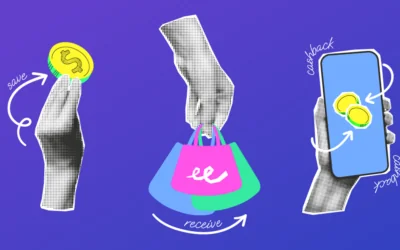2022 is set to be a year in which SME banking takes significant strides forward. Join us in this article as we look at five coming SME banking trends to watch in the year ahead:
1. Putting the human touch at the heart of SME banking
One of the key advantages that banks have over newer competitors such as fintechs and challenger banks is that the latter are generally either digital-only or heavily digitally reliant. For instance, neobanks such as Monzo or N26 don’t have brick-and-mortar branches. There have been many reports of how limited means of contacting neobanks and fintechs have caused serious problems for customers.
In comparison, banks are strategically pivoting how high street branches work for them. This is set to continue in 2022. Despite countless predictions that the bank branch was in its death throes, savvy traditional financial institutions have instead understood the unrivaled value that branches offer in terms of human interaction and as a top-of-funnel client acquisition and retention channel. And they will increasingly combine this unique selling proposition with remote customer experience that is human-led. Importantly, they will continue to adopt automation and advanced AI chatbots to take care of the more straightforward SME client queries, but have a knowledgeable human employee step in for more complex issues.
2. Marked improvements in SME banking basics in 2022
Overseeing full and profound SME banking transformation will still take years, but banks will make steady progress towards that goal. In 2022, SMEs can expect improvements in SME banking basics as banks increasingly embrace the benefits that robotic process automation and data analytics deliver.
For instance, such improvements may come in the form of more efficient communication across multiple channels, both traditional and digital; greater process transparency, for instance, during the loan application process; modernized SME cash flow interfaces; and faster, smoother onboarding.
Crucially, the pandemic acted as a strong reminder to banks of the immense value of the human touch in customer interactions. They are already taking proactive steps to synergize the combination of technology and human interaction. For instance, BBVA combines a modern online SME banking interface with dedicated account managers to respond in person, over digital channels, in person or over the phone. This is a trend that more banks will adopt in 2022 and beyond.
3. Closing the multi-trillion dollar SME financing through digitization
According to the World Bank, “40% of formal micro, small and medium enterprises (MSMEs) in developing countries, have an unmet financing need of $5.2 trillion every year.” Given the central role that MSMEs have in creating jobs and powering GDP growth, it is vital for banks to bridge this financing gap. Moreover, competition pressures from non-traditional market entrants, such as fintechs, challenger banks, and big tech companies such as Amazon, are forcing banks to act. The alternative is to allow competitors to grow their market share as SME lenders. However, while there is new competition, banks have a unique selling proposition: trust. People still trust banks when it comes to their money, but they must build on this platform of trust by bridging the SME financing gap.
Data as an asset will be the driving force behind banks’ transformation of their SME financing service. They can use advanced machine learning, automation, and behavioral analytics technologies to transform their credit application process. This can encompass credit scoring, fraud detection, faster client onboarding, and ongoing data analysis to inform cross-selling and upselling, and future SME client credit provision. Crucially, it is data technology that can drastically reduce the turnaround time for SME financing applications, often up to a period of months, down to merely a few days or even less.
4. The year of dynamic SME banking
Technological innovation from fintechs has shown both SMEs and banks what is truly possible for SME banking. Prominent SME-focused fintechs have brought highly diverse product suites to market, which directly address SME banking needs for the modern business landscape in a way that banks never did. However, the digitization progress that traditional financial institutions have made in recent years, not least in accepting and embracing the need to digitally transform, has meant that banks can now move to bring their own dynamic SME banking offering to market too.
What this will look like is efficient omni-channel communication, flexibility of SME banking products, the ability to subscribe to specific financial apps and tools, and progress towards offering a data-led hyper-personalized SME banking experience. The trend of banks and SME-focused fintechs partnering to combine forces will continue in 2022, which will enable banks to offer such dynamic services to SMEs faster.
5. Banks will take a big step forward towards full SME banking as a service
Banks are largely keenly aware of the need to oversee digital transformation. They also understand the enormous business potential of the SME banking space and that digital technologies have enabled ways to service SMEs that didn’t really exist before, when SMEs were largely an afterthought for banks, as they were deemed far riskier lending candidates than large corporations, the latter of which banks concentrated their corporate lending business on.
Truly digital banking will position banks to offer a total and comprehensive SME banking as a service platform. In this scenario, the bank will meet all SME banking needs, from accounting, cash flow management and deposits to payments, FX, investment and lending. However, banks are increasingly aware that total digital transformation, especially when working with legacy core systems, takes time and that it’s a process.
The pandemic forced banks around the world to implement digital processes fast, in order to meet retail and SME financial service needs in a remote capacity. This impressive achievement on banks’ part has made it clear what they are capable of and that they can take meaningful digital banking steps. This feat will embolden banks to continue making SME financing inroads in 2022 with a further embracing of advanced digital technologies, on their way to offering holistic banking as a service to SMEs.
Level Up SME Banking Services with Strands
Strands partners with banks across the globe to deploy a range of advanced digital financing solutions for SMEs.



